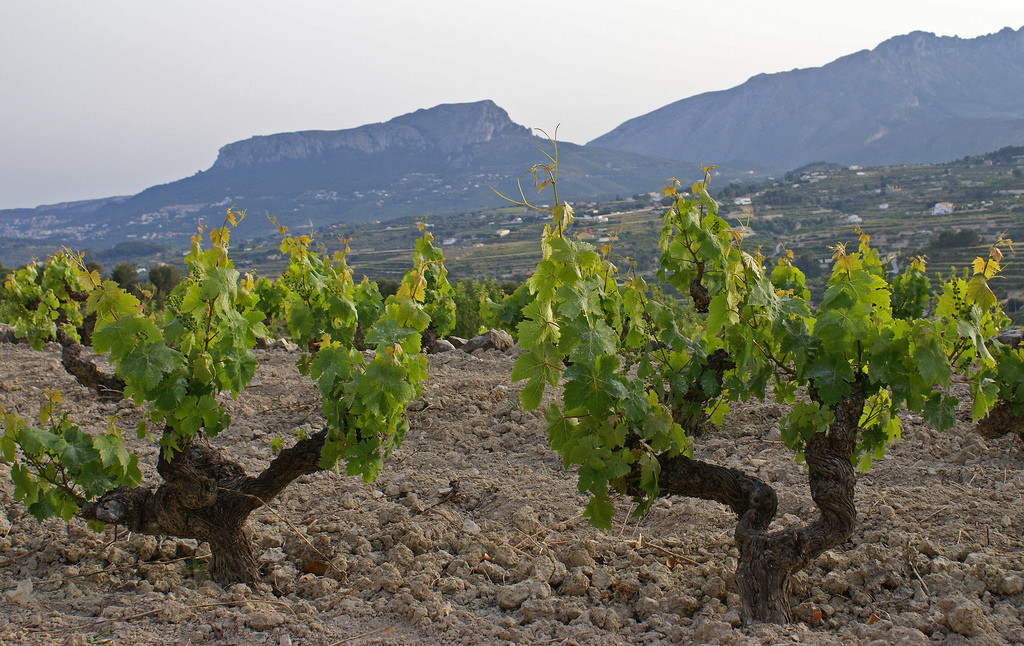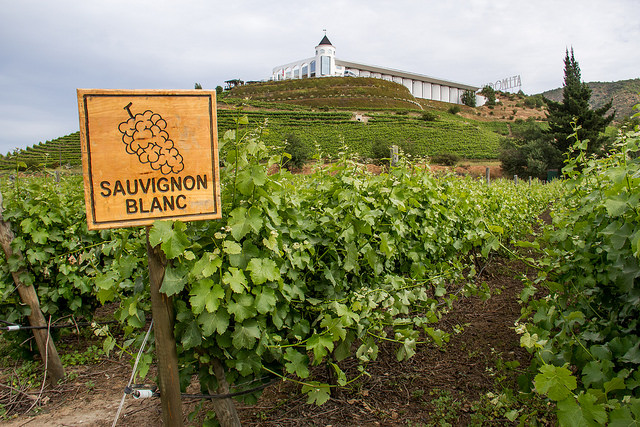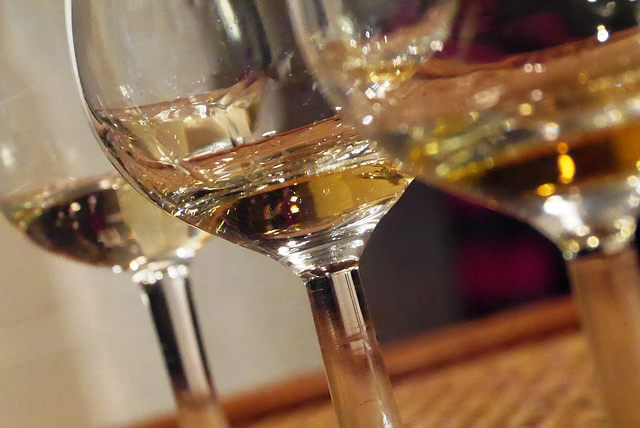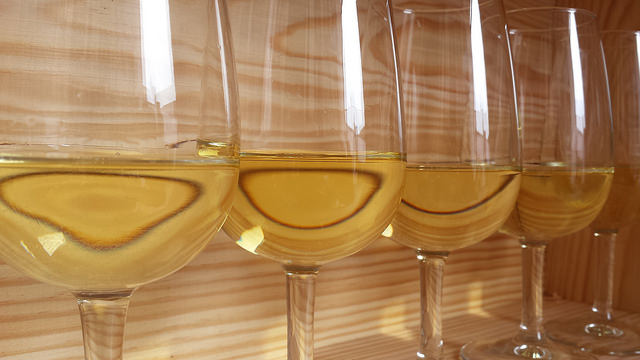One of the most controversial aspects of the wine tasting note is arguably the concept of minerality. There is little scientific consensus regarding what minerality actually IS, and there doesn’t seem to be much (if any) peer-reviewed science supporting a chemical or physical link from the wine to the minerality descriptor. In fact, in 2013, one geological study found no evidence to support a link between soil characteristics and minerality flavor/aroma characteristics in wine. The support for minerality in wine appears to be primarily anecdotal, though the debate certainly isn’t over in the scientific world.
So what exactly is it about wine that provokes this “minerality” description. Chemical analyses aside, what is it that is being tasted that triggers the use of the word ‘minerality’ in the description of the wine?
Are there cultural differences in regards to the use of the ‘minerality’ in tasting notes? While scientific evidence is lacking, some studies have found that wine professionals from different parts of the world experience wine tasting differently, resulting in markedly different descriptions for the same wine. It is possible that the history and teachings of a specific wine region may churn out wine professionals with certain expectations for how a wine is supposed to taste, as well as a certain familiarity for a particular style of wine made in that region. Taking these professionals out of their “territory” and plopping them down in a completely new region where wine styles are very different might result in markedly different descriptors being used compared with wine professionals trained in that new region.
A new study published in the journal Food Quality and Preference aimed to dig a bit deeper into this minerality controversy, and set out to evaluate the effect of culture and the methods through which specific sensory characteristics are perceived on the assignment of “minerality” to a given Sauvignon Blanc wine. In other words, they aimed to look at what flavor and/or aromatic characteristics of the wines resulted in a ‘minerality’ mention in the tasting description and are there cultural differences in the assignment of ‘minerality’ to the wine.
Methods
For this study, a group of 32 French and a group of 31 New Zealand wine professionals (i.e. winemakers, wine producers, and wine judges) were recruited for this study. All wine professionals had experience tasting and rating Sauvignon Blanc wines.
All participants were asked to taste 16 Sauvignon Blanc wines from the 2010 vintage over two different sessions. Half of the wines were from New Zealand, while the other half were from France. All wines were 100% Sauvignon Blanc.
The first session was to determine a “global perception” or overall score and sensory description for each wine. The second session was similar to the first in terms of providing an overall sensory description and score for the wine, however this time, the participants were asked to evaluate the wines both with and without a nose clip.
During all tasting sessions, participants were asked to perform a sorting task as well as a descriptive rating task. In other words, they were asked to sort the wines based on whatever similarities they thought were most fitting, and then they were asked to write a detailed description of each wine.
Results from French and New Zealand wine professionals were compared and analyzed.
Highlighted Results
- New Zealand wine professionals tended to score all wines higher than French wine professionals.
- Both New Zealand and French wine professionals perceived minerality on the palate as well as on the nose.
- The French wine professionals tended to rely more often on nose/olfactory evaluations to produce the tasting note descriptors for the wines, while the New Zealand wine professionals relied on the palate and nose equally for their tasting notes.
- Minerality was an automatic sorting category for the French wine professionals, while it was less clear whether the New Zealand wine professionals were doing the same thing or relying on other sorting criteria.
- For most descriptors, New Zealand wine professionals tended to rate the intensity of these characteristics higher than French wine professionals, though qualitatively the two cultures were very similar in their description of the wines.
- New Zealand wine professionals scored greater familiarity with French wine than the French wine professionals did with New Zealand wine.
- Perception of minerality was positively linked in both cultures to: citrus, flinty/smoky, and chalky/calcareous.
- Perception of minerality was also positively linked in French wine professionals only to lead/graphite.
- Perception of minerality was also positively linked in New Zealand wine professionals only to fresh/zingy.
- Perception of minerality was negatively linked in both cultures to passion fruit.
Conclusions
The main results of this study showed that while there are some minor cross-cultural differences between French and New Zealand wine professionals in terms of their descriptions and perceptions of flavor in Sauvignon Blanc wines, their similarities were far more prevalent. One difference between the two cultures was related to the intensity of flavor written in their descriptive analyses; however, the qualitative descriptions between the two cultures were statistically the same (i.e. the words and phrases used to describe the wines were the same).
Interestingly, the French wine professionals did seem to have a different strategy when it came down to the actual tasting methodologies compared to the New Zealand wine professionals. Specifically, the French relied more heavily on the nose/olfactory channel, while the New Zealand tasters placed equal weight on both the palate and the nose when evaluating their wines. If you think about it, the quantitative/intensity of flavor differences between the two cultures makes sense based on these physical practices. The French are relying more heavily on just one part of the olfaction/gustatory complex, while New Zealanders place equal weight on both, thus potentially resulting in a perception of greater flavor/aroma intensity. They both taste and smell the same things, but New Zealanders sense the flavors and aromas more intensely since they are taking it “all” in instead of relying heavily on just one part of the complex.
In terms of minerality, both cultures appeared to perceive the characteristics in the same way. Descriptors of citrus, flinty/smoky, and chalky/calcareous were positively correlated with descriptors of minerality, suggesting that these aromas and flavors may be triggering a recollection of minerality for the wine professional in this study. Regardless of whether or not there is a link to any real chemical compound or aspect of terroir, certain flavor characteristics might automatically signal “minerality” to these wine professionals.
Thoughts and Ramblings…
The results of this study suggest to me that perhaps minerality is just a simple term to describe a complex sensory beast: the chemical link nonexistent because it’s really a combination or an amalgamation of several different sensory components.
In a way it’s comparable to the Resveratrol:Red-Wine-Is-Good-For-You analogy. Resveratrol gets a lot of the credit and is often the focus of research when it comes to wine and health, however it is known that there are hundreds if not thousands of other compounds in wine that act in concert to provide the vast array of health benefits of wine that have been noted.
With minerality, the concept may be similar. We keep hunting for the “one thing” that will link minerality chemically with terroir, but in reality, it’s likely a combination of many chemical compounds that give us the perception of minerality in the wine. The results of this study seem to support this idea of a more complex interaction of flavors and aromas defining what we think of as “minerality”.
Overall, I see no harm in using the word “mineral” or “minerality” when it comes to describing wines. If that’s what comes to mind when you taste the wine, then that’s what it is. You’re going to taste something different that the person sitting to your left and the person sitting to your right anyway, so use whatever words you want to describe that wine and don’t let anyone try to tell you not to.
Source:





11 comments for “The Perception of Minerality in Wines: A Scientific Perspective”